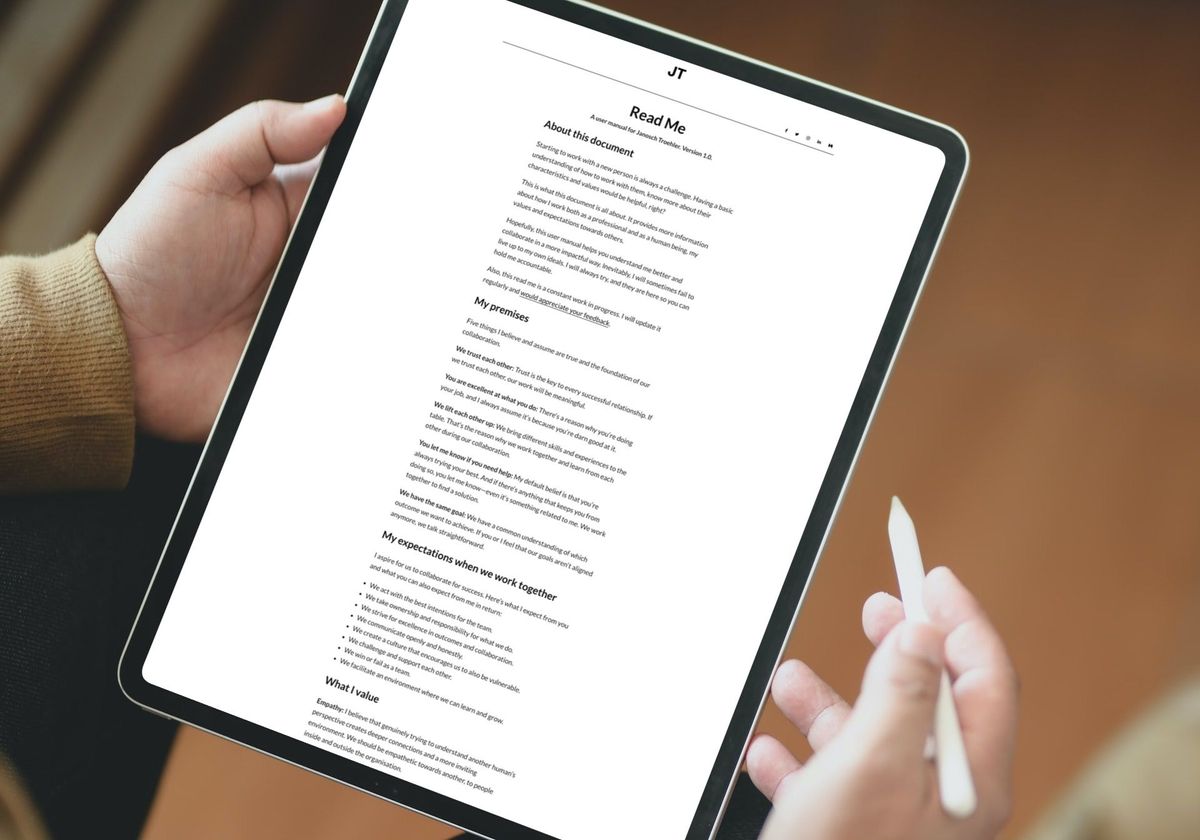How A Readme Improves Your Onboarding Process
Why you should consider writing a personal readme and a free template that you can use to get started.

Starting to work with a new team member is always a challenge. There's a great deal of uncertainty: What are the person's characteristics, values, and beliefs? What are their needs for effective collaboration? Do they have any quirks I should know and consider?
In fact, this level of uncertainty also applies to the new colleague: You can probably remember the queasy feeling in your stomach on your first day. And some of these questions might have raced through your mind as well.
But what if there's a way to eliminate some of the uncertainty and simultaneously create a psychologically safe environment?
What's A Personal Readme?
A personal readme is a living document that provides in-depth information about a co-worker. Initially, those readmes were thought of as a tool for managers—or as Forbes describes it: "Instead of new hires having to go through the trepidation of learning the things that upset a manager, the manager discloses what you need to know upfront. They can explain their philosophy, approach, expectations, and pet peeves, such as long PowerPoints, rambling at meetings, or failing to read emails promptly."
Niklaus Geber defines it as follows: "The idea behind a management readme is to give your employees more context of how you work like a boss. It clarifies things that someone might feel insecure about asking a new boss."

The key to a successful readme, however, is the exercise in vulnerability—an essential leadership skill. It requires honest reflection and openness to constructive (and anonymous) feedback to further improve the readme and discover one's blind spots.
Therefore, a manager that deploys a personal readme also might contribute to a psychologically safe environment because he openly communicates his weaknesses, flaws, and quirks to his team. "Sharing such a document with an employee also shows vulnerability which helps to build trust. Trust is the start of one significant working relationship," explains Niklaus Gerber.
I first heard of the idea from Rouven, a fellow Hyper Island alumni. Intrigued by the concept, it was David Bauer's user manual that finally made me write my own readme.

Although I've written it six months ago, I didn't share it for quite some time because I didn't feel safe enough at the time. The environment has to be facilitated by leadership, and that's also the reason why personal readmes are perceived as a manager's tool.
Creating A Healthy Culture
However, there are good arguments to deploy readmes as a team-spanning tool and make it part of the onboarding process. I spoke to Niklaus Gerber about his experiences:
Everyone joining my team must write and share his manual with the team. This was beneficial to everyone involved. Taking the time to put it into long form how you want to be treated and what other humans should work about you is a good reflection exercise. It also helped the rest of the team to understand how each worked.






